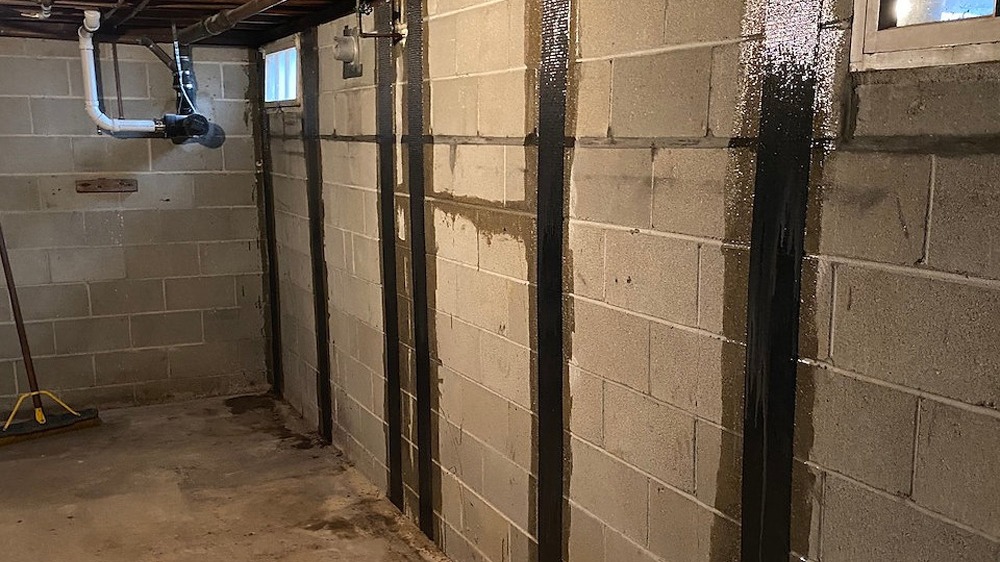
Understanding the Risks of Cracked Retaining Walls
Retaining walls play a crucial role in protecting properties from soil erosion and maintaining structural integrity, especially in sloped areas. When cracks begin to form, home owners face significant risks. Over time, these minor cracks can expand, leading to instability and potentially catastrophic failures. The consequences of ignored structural damage can be dire, including costly emergency repairs, safety threats from collapse, and neighboring property damage.
Why Choose Helical Tieback Anchors for Repair?
One of the most effective solutions for stabilizing cracked retaining walls is the use of helical tieback anchors. Unlike other repair methods, helical tiebacks allow for straightforward installation without extensive excavation. They function like corkscrews that are driven into the ground in a downward angle to secure the wall, redistributing the soil pressure that caused the damage in the first place. This makes them ideal for properties with limited yard space or obstructions that would complicate traditional repair methods.
Foundation repair experts suggest that helical tiebacks are suitable even before signs of serious damage appear, as proactive reinforcement can prevent bowing or tipping walls from forming in the future.
The Installation Process Explained
The installation of helical tiebacks involves a few key steps. First, a team of professionals will assess the entire retaining wall for structural issues and determine how many tiebacks are necessary. After drilling holes through the wall and positioning the tiebacks, they will measure for the required tension to ensure the proper amount of support is achieved. This specialized technique allows the wall to be pulled back to its original position without causing disruption to the surrounding landscape, which can be particularly beneficial in residential areas.
Cost Considerations for Homeowners
Understanding the financial investment is essential for homeowners contemplating repairs. The average cost for helical tiebacks ranges from $1,800 to $2,000 per unit installed. While this may appear steep initially, consider the potential savings on future repairs and property value retention. Left untreated, the structural damage could lead to a much greater financial burden as the circumstances deteriorate.
Additionally, homeowners can rely on professional consultation to acquire fair estimates, which helps to avoid the pitfalls of unexpected costs.
The Importance of Timely Intervention
Procrastinating repairs can prove detrimental not only to the wall itself but can also jeopardize the value of the property overall. Homeowners should periodically assess their retaining walls, keeping an eye out for early signs of damage such as small cracks or leaning structural elements. Immediate action is paramount; addressing the problem before it escalates can be far less costly in the long term.
Expert Insights on Retaining Wall Care
As emerging foundation repair technologies evolve, incorporating insights from professionals is invaluable. The realization that soil saturation exacerbates retaining wall stress is fundamental. Homeowners may consider implementing additional drainage solutions if they live in areas with heavy rainfall or poor drainage systems. These measures prevent excess water from accumulating around structural elements, thereby maintaining wall stability.
In summary, helical tiebacks present a robust solution to the issues posed by cracked retaining walls, offering effective support and stabilization while minimizing disruption. Homeowners are encouraged to consult with reputable foundation experts to explore their options. By taking timely action and utilizing advanced repair methods, they can safeguard their properties against the risks associated with deteriorating retaining walls.
#RetainingWalls, #CrackedWalls, #HelicalTiebacks, #FoundationRepair, #SoilErosion, #StructuralStability, #HomeownerSafety, #RepairCosts, #DrainageSolutions, #PropertyMaintenance
 Add Row
Add Row  Add
Add 




 Add Row
Add Row  Add
Add 


Write A Comment